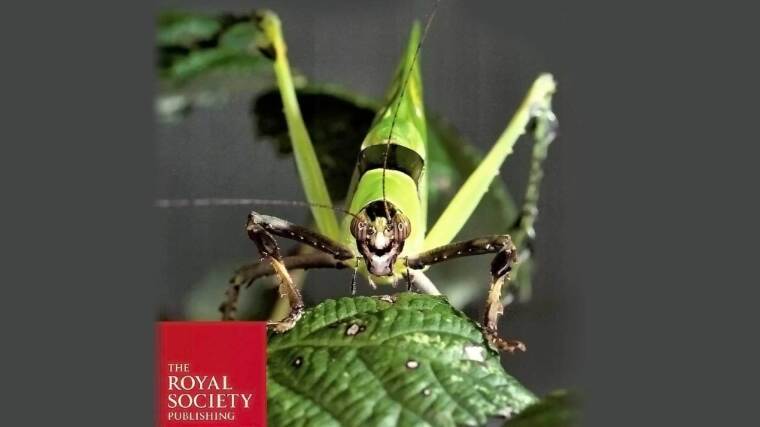
In my lab, I bring together researchers interested in developing our understanding of how senses connect individuals with their environment. My own research focus lays on acoustic communication in mammals and insects. While most projects in my lab centre around this topic, we aim at exploring a wide range of sensorially driven behaviours in animals and humans.
Acoustic communication in bushcrickets
There are numerous acoustically communicating insects. This project deals with the diversity of the insect ears that have developed independently several times to enable insects to perceive sound. Using Laser Doppler Vibrometer technology, we study the biomechanics of insect ears, from bushcrickets (katydids) to locusts and moths. Electrophysiological studies provide information on how mechanical motions are transformed into neuronal signals in sensory cells.
- Involved people: Dr. Jan Scherberich, Dr. Annette Stange Marten
Funding: DFG
Neural coding of auditory information
In this project, we investigate the processing of acoustic information coming from the ear in the forelegs in the first integration center, the prothoracic ganglion of bushcrickets. Here, neuronal information of a low number of sensory cells converge to ever fewer cells that project to the brain. Our goal is to understand the timing and precision of this processing step and to relate the finding to the behaviour of the katydid.
- Involved people: Dr. Jan Scherberich, Dr. Annette Stange Marten
Funding: DFG
Neuroethology, Neuropharmacology and Evolution of Cricket Communication.
The mate finding behaviour of insects, in particular crickets, is controlled and driven by relatively small neural networks. The aim of this project is to reveal and understand the anatomy and neurophysiological function of the individual neurons in the networks, to investigate the network's susceptibility to agricultural insecticides and also to reconstruct the neurobiological changes that drive the behavioural evolution towards new communication systems.
- Funding: DFG
- Head of the project: Dr. Stefan Schöneich
- Doctoral Student: Marcelo Christian
- Collaboration: Dr. Tony Robillard (Muséum national d’Histoire naturelle; Paris, France)
- Collaboration: Dr. Hannah ter Hofstede (Dartmouth College, Hanover, NH, USA)
Motion plays a major role for insects in finding food or mating partner. Using a high-speed video camera and sensitive force plates, we measure motion in various insects.
- Involved people: Toni Wöhrl
- Collaboration: Prof. Dr. Sebastian Oberst (University of Technology Sydney, Australia)
Funding: DAAD
Diversity in mammal hearing, from anatomy to sound perception.
The mammalian inner ear shows an amazing intraspecific diversity, which we want to investigate. Adaptations to specific lifestyles are also reflected in the cochlea shape. In this project we investigate the diversity of the mammalian ear and how the cochlea shape changes when mammals (Carnivora) return to the water.
- Involved people: Roxana Taszus, Dr. Alexander StößelExternal link, Joaquin del RioExternal link
Impact of acoustic overstimulation on the efferent fibers of the hearing system in rodents.
The inner ear of mammals is very sensitive to noise. Too much sound can easily cause damage. In this project, we investigate how hearing changes in Mongolian gerbils after a noise trauma and what role efferent fibers play in this process.
- Involved people: Melisa Merdan Desik
- Collaboration: Prof. Dr. Manfred Kössl (GU-Frankfurt)
Funding: DFG
Preventing acoustic overstimulation in the workplace
Continuous exposure to noise in the workplace can be related to the development of noise-induced hearing loss. In this project we aim at testing hearing ability in employees that are exposed to noise in order to detect possible hidden hearing loss at an early stage.
- Collaboration: Prof. Dr. Cristian Doble (FSU Jena, ENT Clink Jena)
Funding: BGN Thüringen